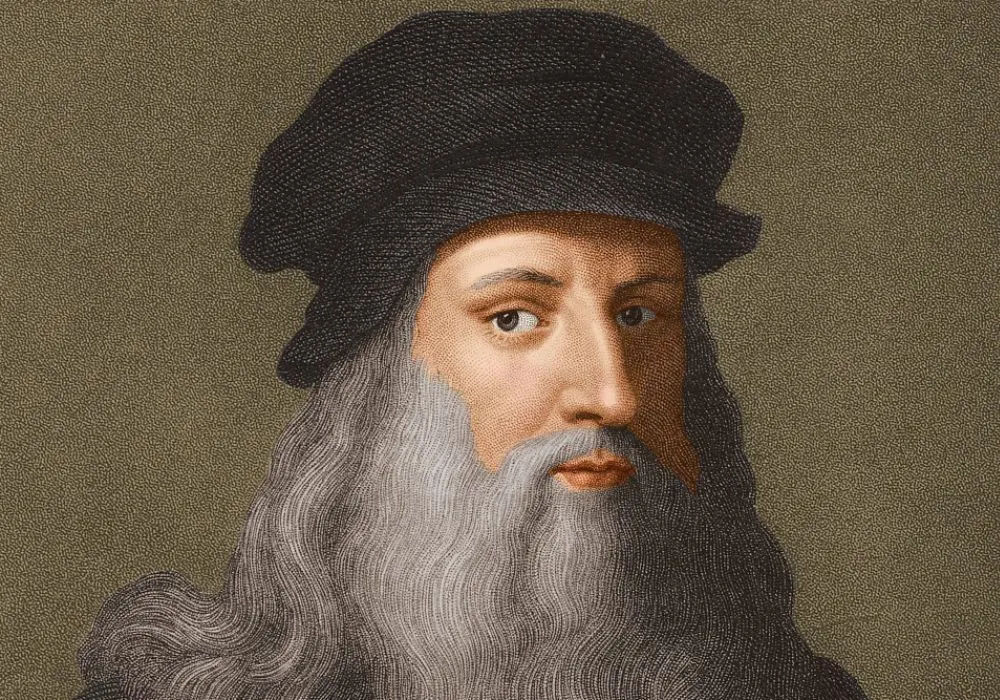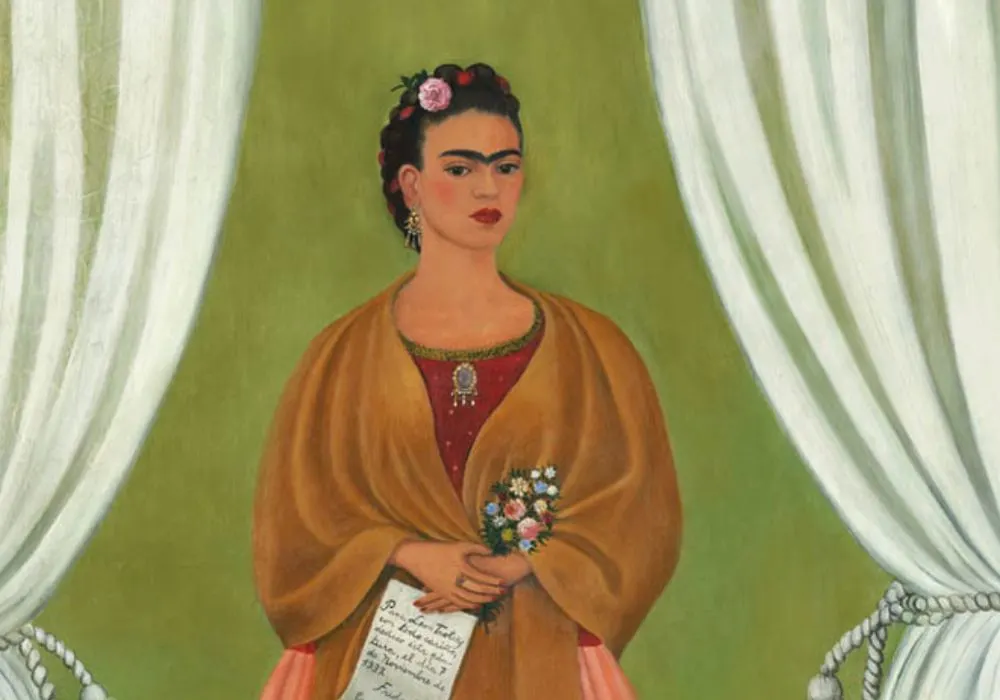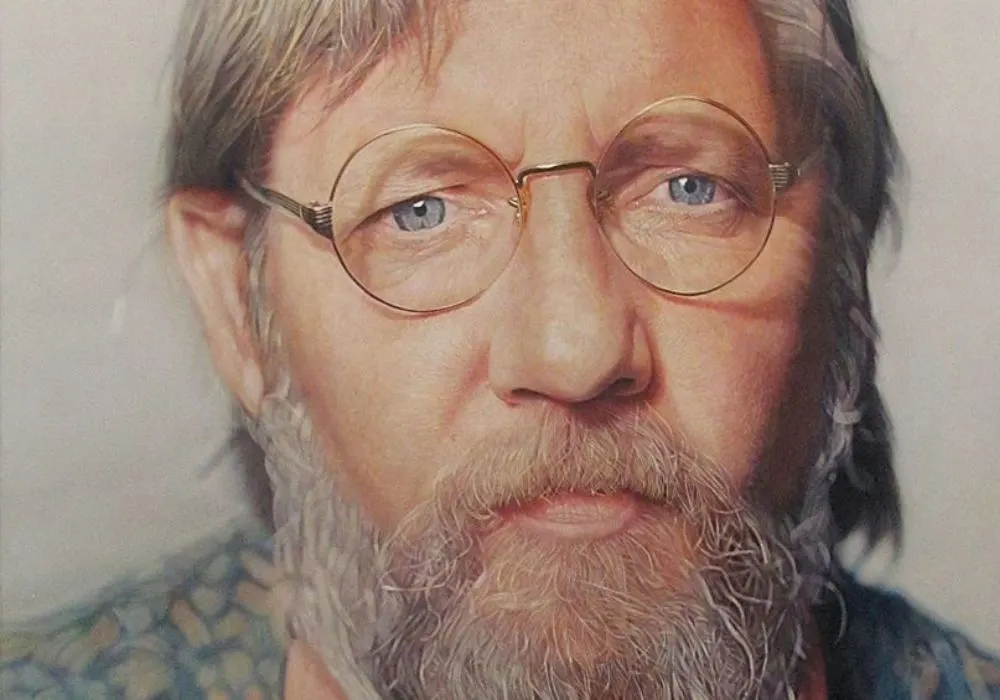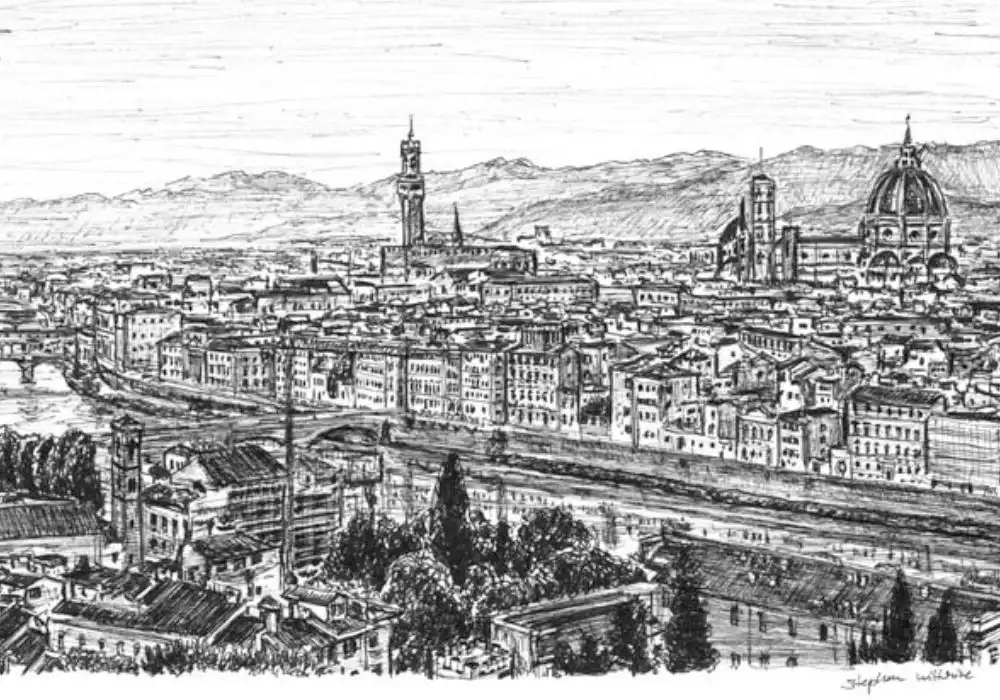From the Renaissance to contemporary times, there have been many successful people with disabilities throughout history. Many artists have overcome significant physical and mental challenges to produce extraordinary works of art. In truth, this shouldn’t be surprising. This is because so many people have disabilities. Approximately 1.3 billion people, or about 16% of the global population, experience significant disabilities today according to WHO. This number is increasing due to various factors, including aging populations and the prevalence of chronic health conditions.
- Stephen Wiltshire
- Frida Kahlo
- John Milton
- Henri Matisse
- Christine Sun Kim
- Georgina Kleege
- Leonardo da Vinci
- Chuck Close
- Gino Severini
- Fortunato Depero
Stephen Wiltshire, diagnosed with autism spectrum disorder, is celebrated for his incredible memory and ability to create detailed cityscape drawings from memory. His remarkable talent showcases the immense capabilities of disabled artists when given the right support and opportunities.
John Milton, who created the epic “Paradise Lost,” continued to write masterpieces despite losing his sight, demonstrating how disability and art can intertwine to produce world-changing literature. Accessibility in the arts is crucial not only for fostering creativity but also for recognizing the valuable contributions of disabled artists like Milton and Wiltshire.
Henri Matisse, who became wheelchair-bound following surgery, did not let his condition hinder his artistic vision, instead adapting his methods to continue his work. The importance of accessibility in the arts is underscored by the ability of these artists to adapt and thrive, proving that creativity knows no bounds. Explore their stories and discover how their unique experiences have shaped their masterworks, inspiring generations of artists to come.

These three are only the beginning!
Celebrating Diverse Abilities in Art History
Art history is rich with examples of artists who have overcome disabilities to create compelling and influential works. These artists not only created masterpieces but also challenged societal perceptions of disability and art.
Stephen Wiltshire, diagnosed with autism spectrum disorder, astounds audiences with his detailed cityscape drawings. His remarkable memory allows him to recreate scenes with precision. More about his works can be found here.
Frida Kahlo, known for her vivid and emotive self-portraits, lived with severe pain and medical complications from a bus accident and polio. Her work is celebrated for its raw portrayal of her experiences and resilience. To learn more, visit this site.
John Milton, the renowned poet, continued to create literary masterpieces, including Paradise Lost, despite losing his sight. He dictated his works to scribes, showcasing his determination and literary genius.
Christine Sun Kim, a contemporary artist, uses sound as a medium despite being deaf. Her performances and visual art explore the social importance of sound and challenge conventional notions of communication and auditory experience.
Georgina Kleege, both an author and artist, addresses visual impairment through her works. Her book, More Than Meets The Eye, provides insights into the world of a visually impaired artist.
These artists, among others, demonstrate that disability and art are not mutually exclusive. Their legacies continue to inspire and affirm that diverse abilities can lead to groundbreaking contributions in the art world. Each artist’s journey underscores the profound impact of their unique perspectives.
Leonardo da Vinci: A Genius Beyond Disabilities

Leonardo da Vinci, an iconic figure from the Renaissance, is widely celebrated for his contributions to art and science. Renowned for masterpieces like the Mona Lisa and The Last Supper, his work extends across various fields, influencing generations.
Recent studies have suggested that Leonardo may have had symptoms consistent with Attention Deficit Hyperactivity Disorder (ADHD). This hypothesis is based on his tendency to start numerous projects and leave many unfinished. His scattered focus and relentless curiosity reflect traits often associated with ADHD.
Despite these challenges, Leonardo’s diverse talents and relentless pursuit of knowledge led to groundbreaking work. His detailed anatomical studies, designs for machines like helicopters and tanks, and sketches like the Vitruvian Man demonstrate his genius.
Leonardo’s notebooks, filled with intricate drawings and scientific observations, offer a glimpse into his unquenchable thirst for understanding the world. This blend of artistic skill and scientific inquiry set him apart as a true Renaissance polymath.
For more detailed exploration on his life and contributions, you can read this article from Britannica on Leonardo da Vinci or this study suggesting he may have had ADHD.
Frida Kahlo: Pain and Passion on Canvas

Frida Kahlo, a renowned Mexican artist, transformed her suffering into art. Stricken by polio at age six and severely injured in a bus accident at eighteen, her life was inundated with chronic pain and disability. These experiences deeply influenced her work.
Her self-portraits are a vivid depiction of her torment and resilience. Paintings like “The Broken Column” and “Henry Ford Hospital” display her physical and emotional agony. Each piece embodies a raw and personal narrative that speaks to her continuous battle with pain.

Key Aspects of Kahlo’s Art
- Themes: Pain, disability, identity, and femininity
- Techniques: Surrealism, symbolism, vibrant colors
- Influences: Mexican culture, her personal life and experiences
Kahlo’s works often feature symbolic imagery. For instance, in “The Broken Column,” her open body reveals a fractured spine, symbolizing her physical torment.
Apart from paintings, Kahlo’s impact extends to fashion and politics. Her distinctive style, featuring traditional Mexican attire and bold accessories, reflects her cultural heritage and personal strength.
Kahlo’s legacy as a role model for artists and people with disabilities is profound. She illuminated the struggles of living with chronic pain through her art, offering a poignant insight into her enduring spirit.
For further details on her artistic journey, visit How Frida Kahlo Made Chronic Pain and Disability Visible Through Art and Frida Kahlo: Resilience, Pain and Empowerment.
Contemporary Disabled Artists Breaking Barriers
Stephen Wiltshire, diagnosed with autism spectrum disorder, is recognized for his detailed cityscapes, drawn purely from memory. His ability to capture entire city views after brief observation highlights the incredible potential of neurodiverse artists. Learn more about his work here.
Frida Kahlo remains a monumental figure in art, celebrated for her self-portraits that candidly depict her experiences with physical pain. Kahlo’s work has inspired countless artists, demonstrating that physical disabilities contribute to powerful artistic expression. More on her contributions can be found here.
The disability arts movement is continually shaped by artists such as Christine Sun Kim, a deaf sound artist. Her performances and installations challenge perceptions of sound and communication, showing that disability can drive innovative artistic mediums. Read more about her work here.
Commercial galleries are beginning to recognize the value of works by disabled artists. However, many still face an uphill battle to achieve equality in the art market. Efforts to increase inclusivity help in pushing these artists towards mainstream recognition. Insights on this shift can be found here.
The National Disability Arts Collection & Archive (NDACA) is crucial in preserving the legacy of disabled artists. By documenting their achievements and activism, it demonstrates the powerful impact of inclusivity in the arts. More details on NDACA’s contributions here.
These contemporary disabled artists are not just creating art; they are reshaping the landscape of artistic expression by breaking societal barriers and presenting unique perspectives that emphasize the importance of inclusivity.
Chuck Close: Redefining Portraiture

Chuck Close was a pivotal figure in modern realism, renowned for his large-scale, photorealistic portraits. Born in 1940, he developed a unique style, transforming photographs into intricately detailed paintings.
Close’s approach to portraiture emphasized repetition and precision. He often used a grid system, breaking down images into smaller segments, which he meticulously reproduced.
His most famous works, such as his 1968 self-portrait, display extraordinary attention to detail. This piece captures his image with a smoldering cigarette, emphasizing his informal yet intense presence.
In 1988, Close experienced a spinal artery collapse, which left him partially paralyzed. Remarkably, he adapted his techniques to continue painting. He utilized a brush strapped to his wrist, maintaining the quality of his work despite physical limitations.
Close’s work extends beyond traditional canvases. He created photo portraits using a very large format camera, showcasing his versatility and innovation in different mediums.
His pieces have decorated New York City taxicabs and adorned the walls of prestigious museums. His influence is evident in every medium he touched, pushing boundaries and redefining contemporary portraiture.
Notable Challenges:
- Dyslexia
- Paralysis
- Face Blindness
Despite these obstacles, Close’s dedication and resilience highlight his exceptional talent and impact on the art world. His art remains a testament to his ability to overcome personal challenges while continually transforming and enriching the world of portraiture.

Stephen Wiltshire: Detailed Cityscapes from Memory

Stephen Wiltshire, an artist with an extraordinary talent, is widely known for his intricate cityscapes drawn entirely from memory. Diagnosed with autism at age three, he has overcome significant challenges to become a celebrated artist.
Wiltshire’s art showcases his unique ability to depict urban landscapes with precise detail. After viewing a city just once, he can recreate it on paper with incredible accuracy. His remarkable skill has earned him international acclaim.
He began drawing at the age of five. His works include famous landmarks and cities such as New York, Tokyo, and Rome. One notable example is his panoramic drawing of Singapore, created after a single helicopter ride over the city.
Stephen has received numerous accolades for his contributions to the art world. In 2006, he was honored as a Member of the Order of the British Empire (MBE). His artworks are displayed in prestigious museums and collections worldwide.
Wiltshire studied Fine Art at City & Guilds Art College, where he refined his skills. His drawings are not only visually stunning but also highlight his profound understanding of architecture and perspective. Visitors are often captivated by the lifelike quality of his cityscapes.
To explore more about his life and works, visit his official biography. His achievements serve as an inspiration, demonstrating that disability can coexist with extraordinary talent and creativity.
Disabled Artists and the Futurism Movement
The Futurism movement, celebrated for its dynamic representation of speed and technology, involved several disabled artists who brought unique perspectives to the genre.
Gino Severini, who was partly disabled due to a respiratory condition, made significant contributions to Futurism. His work often reflected themes of dynamism and urban modernity.
Another artist,Fortunato Depero, faced physical challenges after a severe illness. Despite this, he created innovative works that embodied the spirit of Futurism with bold colors and geometric forms.
Despite the physical limitations faced by these artists, they both utilized their unique insights to push the boundaries of Futurism.
| Artist | Disability | Contribution |
| Gino Severini | Respiratory condition | Dynamic urban scenes |
| Fortunato Depero | Physical challenges post-illness | Bold, geometric designs |
Their contributions underscore the influence and adaptability of disabled artists within the Futurism movement, highlighting how personal challenges can inform and enhance artistic expression.

Artistic Expression as a Form of Therapy
Artistic expression has long been recognized as a powerful form of therapy. For individuals with disabilities, engaging in creative activities can play a crucial role in emotional and psychological healing.
Throughout history, famous artists have demonstrated how visual art continued to be a vital outlet for emotional release, especially in the modern world where mental health awareness has grown. For instance, five world-famous artists who battled health issues, such as surrealist artists and portrait painters, found solace and expression through their work.
Engaging in creating art allows individuals to express their feelings and thoughts without the need for words, a practice that has been vital for many famous painters whose health problems led them to use art as an emotional release. Art therapy helps channel behaviors into a constructive medium, offering an outlet for emotions that might be difficult to articulate otherwise. It is not about creating a perfect piece of art but about the process and emotional release.
Individuals such as Stephen Wiltshire, who has autism, have demonstrated how engaging in art can lead to exceptional achievements. Stephen is known for his detailed cityscape drawings, created entirely from memory.
Incorporating artistic activities into therapy sessions can lead to improvements in fine motor skills, cognitive abilities, and self-esteem. These activities help patients focus, relax, and improve overall well-being.
Art therapy is not limited to traditional art forms. It can include digital art, pottery, sculpture, and even performance arts like theater. All these forms provide different ways for individuals to express themselves and experience personal growth.
To emphasize the impact of art therapy, consider the story of an artist with a cognitive disability who found a medium to express his innermost feelings and thoughts. His work, featured on Designmantic, stands as a testament to the therapeutic power of art.
Artistic expression offers a bridge to communication and self-discovery, making it an invaluable tool in the therapeutic process for individuals with disabilities.
The Role of Art Institutions in Promoting Inclusivity
Art institutions play a crucial role in promoting inclusivity, ensuring that diverse voices are represented and heard. Many museums and galleries are actively diversifying their collections and exhibitions, providing a platform for marginalized artists.
Inclusivity means more than just diverse exhibitions. It extends to making art accessible to everyone. Institutions should prioritize accessible art by incorporating features like tactile experiences, audio guides, and captioning for the hearing impaired.
Key Practices for Promoting Inclusivity:
- Developing programs and grants that support diverse artists.
- Offering mentorship to help artists improve their skills.
- Creating inclusive spaces by considering physical accessibility.
Art institutions can also enhance inclusivity by collaborating with artists who emphasize accessibility in their creative practice. These artists can provide valuable insights on how to make art more accessible to audiences with disabilities.
Moreover, representation and equity are vital. Seeing oneself reflected in art can be empowering. Museums and galleries can foster this by intentionally showcasing artists from various backgrounds. This approach not only enriches the cultural landscape but also encourages broader participation in the arts.
Bold steps in inclusivity, such as hosting exhibitions for artists with disabilities, can profoundly impact the art world. By highlighting these artists, institutions not only validate their experiences but also inspire others. Initiatives like these contribute to a more inclusive and dynamic art community.
Advancements in Accessibility for Artistically Inclined Individuals
Creating accessibility in the arts is crucial for fostering inclusivity. Technological innovations have played a pivotal role in this effort.
Adaptive tools such as mouth sticks and eye-tracking software enable artists with limited hand mobility to draw and paint. These devices open new avenues for self-expression.
Assistive technology platforms develop applications tailored for artists with disabilities. For example, some software converts speech to text, facilitating scriptwriting for those unable to use traditional input methods.
Voice-activated assistants like Siri and Alexa also aid in managing day-to-day tasks, allowing artists to focus on their creative processes. These devices can set reminders, search for references, and play background music.
Another significant advancement is the inclusion of tactile art. Museums and galleries now feature artworks that can be explored through touch. This initiative ensures that visually impaired individuals can experience art in a meaningful way.
Funding and grants have also become more accessible. Organizations now offer financial support specifically for artists with disabilities. These programs help cover the costs of specialized equipment and promote artistic development.
Online platforms such as YouTube and Instagram provide artists with disabilities a space to share their work. These platforms enable wider audiences to appreciate diverse art forms, breaking down traditional barriers.
The growing interest in accessibility highlights the importance of diversity in artistic expression. From adaptive tools to inclusive exhibitions, advancements in technology and societal awareness are vital for artistically inclined individuals with disabilities.
For more information, visit the Empowering Creativity blog.

Giving Those With Disabilities a Voice Is Incredibly Important
Giving a voice to those with disabilities through art is crucial for several reasons:
Representation and Visibility: Art provides a platform for disabled individuals to express their unique experiences and perspectives, which are often underrepresented in mainstream media. This visibility helps to challenge and change societal stereotypes and misconceptions.
Empowerment and Identity: Engaging in artistic practices allows disabled individuals to take pride in their identity and experiences. It is a powerful means of self-expression and can be a radical act of self-love and acceptance.
Connection and Community: Art fosters a sense of community and belonging among disabled people. It provides opportunities for connection and mutual support, which can be particularly meaningful for those who may feel isolated due to their disabilities.
Advocacy and Change: Artistic expression can be a form of advocacy, raising awareness about the realities of living with disabilities and promoting social change. It can educate the broader public and influence policies to create a more inclusive society.
Overall, art serves as a powerful tool for disabled individuals to share their stories, advocate for their rights, and contribute to cultural and social transformation.
The Accessibly team is proud to offer a suite of innovative accessibility tools that empower individuals with disabilities to navigate the world with greater ease and confidence. Our technology not only enhances mobility and independence but also opens up new avenues for creative expression, enabling users to create beautiful art. By breaking down barriers and fostering inclusivity, we are dedicated to ensuring that everyone, regardless of their physical or cognitive abilities, has the opportunity to fully participate in and contribute to society.





